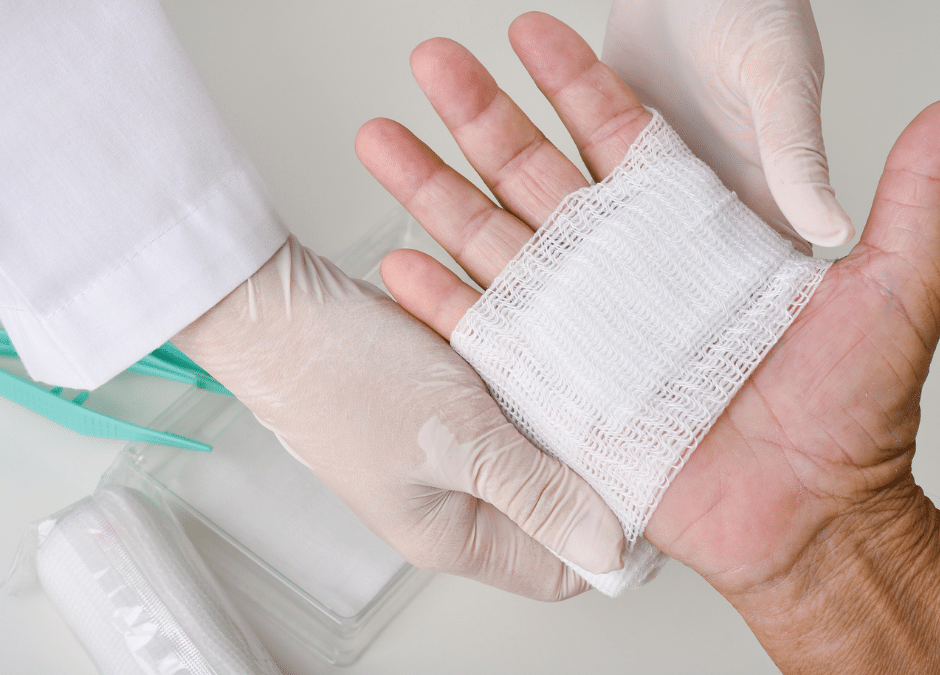Did you know that while wound stitches are a common medical procedure, complications can arise in up to 10% of cases?
You might think of stitches as a simple fix for cuts and lacerations, but the reality is that they come with their own set of risks. These can range from infection and scarring to allergic reactions and even the body rejecting the suture material, not to mention the potential for pain and healing complications.
Understanding these risks is crucial, especially if you or someone you care about is facing the prospect of stitches.
Let’s explore what makes these risks a concern and how they can impact the healing process.
Listen to the Article
Key Takeaways
- Infection risk can be minimized with strict hygiene and prompt antibiotic treatment.
- Individual factors and suture techniques significantly influence scarring outcomes.
- Allergic reactions to suture materials require immediate attention for patient safety.
- Recognizing and managing healing complications ensures a safer recovery process.
Infection Risks
One significant risk associated with wound stitches is the potential for infection, which can compromise the healing process and necessitate further medical intervention. Bacteria can infiltrate the site, leading to symptoms such as redness, swelling, and pus discharge.
It’s imperative to maintain strict hygiene and follow post-surgical care instructions meticulously to mitigate this risk. Early detection and antibiotic treatment are crucial for preventing complications and ensuring a safe recovery.
Scarring Concerns
Beyond infection risks, another concern with wound stitches is the potential for scarring, which can impact both cosmetic outcomes and functional recovery. Considerations include:
- Tissue type and depth of wound.
- Suture material and technique.
- Individual healing capacity.
- Post-suture care and follow-up.
Understanding these factors helps mitigate scarring risks, ensuring you’re informed about potential outcomes and can take proactive steps for optimal healing.
Allergic Reactions
While considering the potential risks associated with wound stitches, it’s crucial to be aware that some individuals may experience allergic reactions to the suture material used. Symptoms can include redness, swelling, and itching at the stitch site.
These reactions are typically due to sensitivity to specific materials such as latex or certain metals in non-absorbable sutures. Prompt identification and management are essential for patient safety and comfort.
Healing Complications
After addressing allergic reactions, it’s important to recognize that healing complications can also pose significant risks following the use of wound stitches.
- Infection: Bacteria can infiltrate the wound, leading to redness, swelling, and discharge.
- Dehiscence: Premature opening of a wound, risking deeper infection.
- Necrosis: Dead tissue around the wound, impeding healing.
- Scar Formation: Excessive scarring can affect mobility and aesthetics.
Suture Rejection and Pain
How does your body react when it can’t tolerate suture material, leading to rejection and pain?
Your immune system may perceive the suture as a foreign object, initiating an inflammatory response. This can manifest as erythema, swelling, and discomfort at the stitch site.
In some cases, the body may expel the suture, necessitating removal and potential re-suturing with a more biocompatible material to ensure healing safety.
Frequently Asked Questions
Can Activities or Exercises Affect the Healing Process of Stitched Wounds?
Yes, engaging in vigorous activities or exercises can strain your stitched wound, potentially disrupting delicate tissue healing. It’s essential to moderate your actions, prioritizing gentle movements to ensure optimal healing and prevent complications.
How Does the Type of Suture Material Influence the Duration Before Stitch Removal?
The suture material impacts how long your stitches stay in. Synthetic materials often allow for quicker removal compared to natural ones, reducing infection risks and supporting faster healing. Always follow your healthcare provider’s guidance for safety.
Are There Dietary or Nutritional Recommendations to Enhance Wound Healing Post-Stitching?
To enhance wound healing post-stitching, you should focus on a balanced diet rich in protein, vitamins C and E, and zinc. These nutrients support tissue repair and immune function, crucial for a speedy recovery.
What Are the Signs That Indicate a Stitched Wound Is Healing Properly, Beyond the Absence of Complications?
As your wound stitches the bridge between injury and recovery, proper healing signs include reduced redness, minimal swelling, and pain diminution. Watch for these milestones, ensuring your path to wellness is on track, prioritizing safety.
How Does Age or Pre-Existing Medical Conditions Affect the Risk Factors and Healing Process of Stitched Wounds?
Your age and pre-existing conditions can significantly influence your stitched wound’s healing process. Older individuals or those with chronic diseases may face slower recovery and increased complication risks, emphasizing the need for careful wound management.

